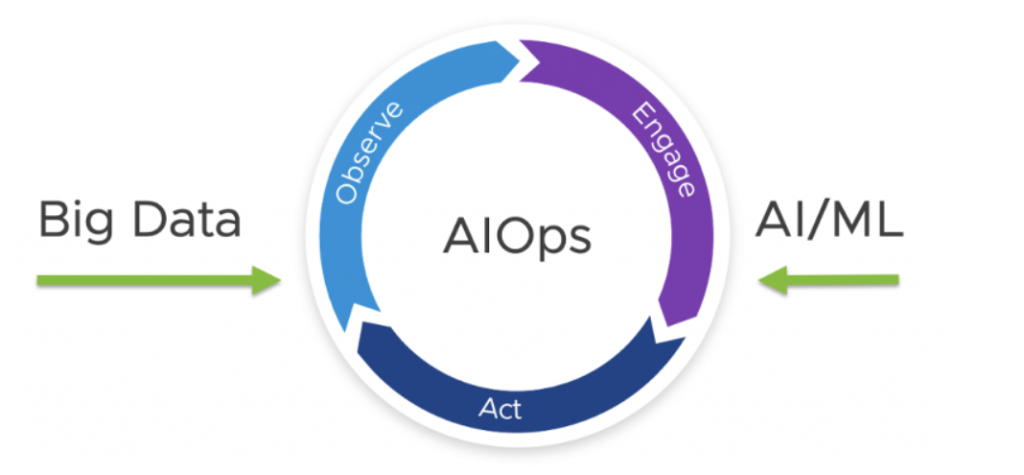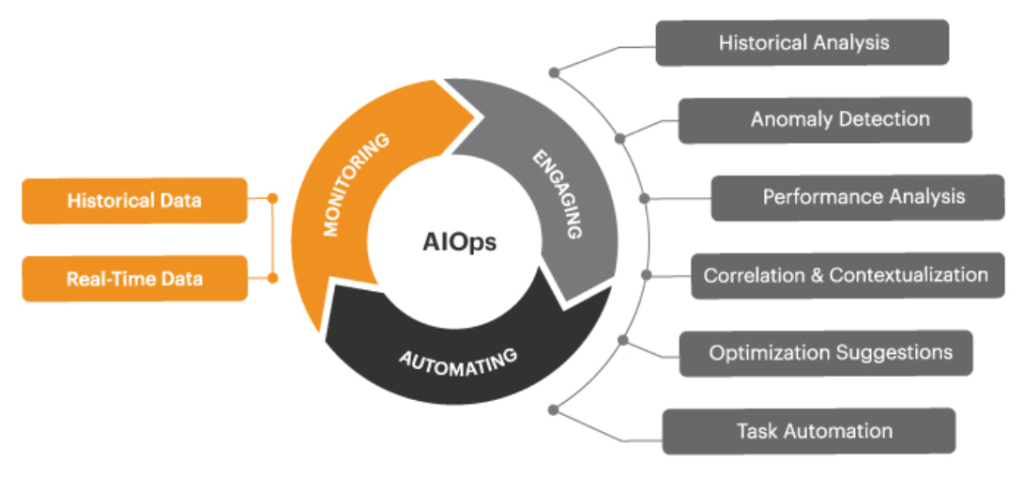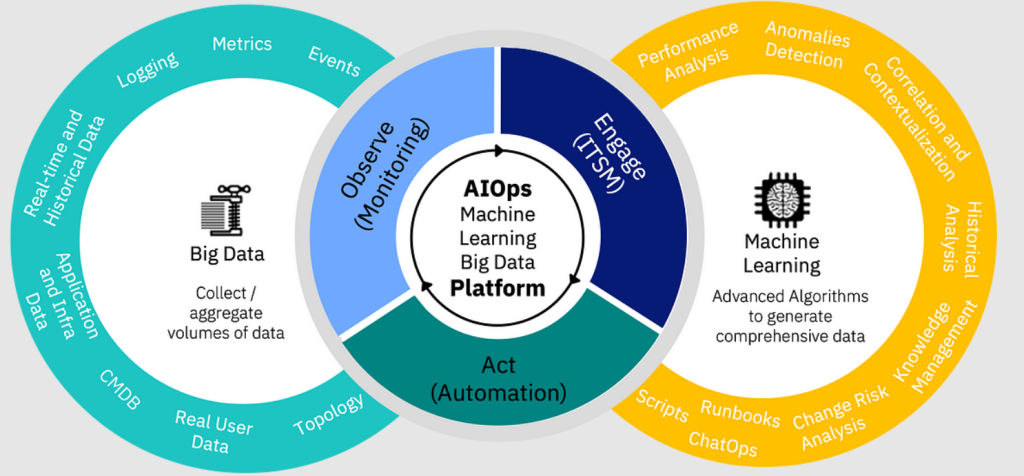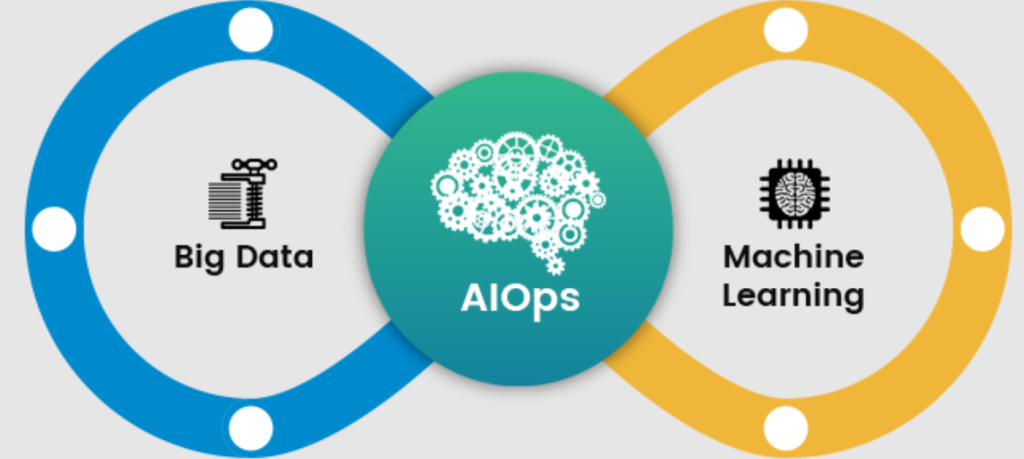Section 1: Introduction to AIOps

What is AIOps?
AIOps, or Artificial Intelligence for IT Operations, represents a new paradigm in managing IT environments by leveraging artificial intelligence and machine learning to enhance the efficiency and effectiveness of IT operations. Unlike traditional IT operations that rely heavily on manual processes and reactive measures, AIOps provides an intelligent, automated, and predictive approach to managing IT infrastructures. By analyzing vast amounts of data generated by IT systems, AIOps helps organizations predict, identify, and resolve issues before they impact business operations, offering a proactive and holistic approach to IT management.
Definition and Core Concepts

AIOps can be defined as the application of artificial intelligence (AI) and machine learning (ML) techniques to automate and optimize IT operations. The core concepts of AIOps include data-driven decision-making, predictive analytics, anomaly detection, and automation of routine tasks. AIOps platforms collect and analyze data from various IT environments, using algorithms to detect patterns, anomalies, and potential issues. This enables IT teams to respond more quickly to incidents, optimize resource utilization, and improve overall service quality. AIOps is built on the foundation of big data analytics, combining multiple data sources to deliver actionable insights and drive continuous improvement.
Benefits of AIOps
AIOps offers numerous benefits that enhance IT operations and support business objectives. Key benefits include improved incident management, as AI-driven analytics can quickly identify root causes and suggest resolutions. This reduces mean time to resolution (MTTR) and minimizes downtime. AIOps also enables proactive monitoring and predictive maintenance, allowing organizations to anticipate issues before they occur. By automating routine tasks, AIOps frees up IT teams to focus on strategic initiatives, improving productivity and efficiency. Additionally, AIOps enhances collaboration between IT and business teams by providing a unified view of IT environments and performance metrics.

Challenges in Traditional IT Operations
Traditional IT operations face several challenges that hinder their effectiveness in managing modern IT environments. These challenges include the increasing complexity of IT infrastructures, driven by the adoption of cloud computing, microservices, and hybrid environments. Manual processes and siloed operations lead to slow response times, inconsistent service delivery, and increased risk of human error. The growing volume of data generated by IT systems also overwhelms traditional monitoring tools, making it difficult to extract meaningful insights. A lack of integration and collaboration between IT teams further exacerbates these issues, resulting in fragmented operations and reactive management.

The AIOps Lifecycle
The AIOps lifecycle consists of several key stages that enable organizations to implement and benefit from AI-driven IT operations effectively.
Data Ingestion and Preparation
Data ingestion is the first step in the AIOps lifecycle, involving the collection and integration of data from various sources such as log files, performance metrics, and event records. This data is then prepared for analysis through processes such as cleaning, normalization, and transformation, ensuring that it is accurate, consistent, and ready for further processing.
AI Model Development and Training
Once the data is prepared, AI models are developed and trained to analyze patterns, detect anomalies, and predict incidents. Model development involves selecting appropriate algorithms, training the models on historical data, and tuning them for optimal performance. This stage is critical for ensuring that AIOps platforms can accurately identify and respond to IT issues.
Incident Prediction and Prevention
AIOps platforms use trained AI models to predict potential incidents and prevent them from impacting business operations. By continuously monitoring IT environments and analyzing data in real time, AIOps can identify emerging issues and alert IT teams before they escalate. This proactive approach reduces downtime, improves service reliability, and enhances user satisfaction.
Automation and Orchestration
Automation and orchestration are key components of AIOps, enabling organizations to automate routine tasks and orchestrate complex workflows. AIOps platforms use automation to execute predefined actions in response to specific events, such as restarting a service or reallocating resources. Orchestration involves coordinating multiple automated tasks to achieve desired outcomes, streamlining IT operations and improving efficiency.
Continuous Improvement
Continuous improvement is an integral part of the AIOps lifecycle, focusing on refining AI models, processes, and workflows to enhance performance over time. By analyzing feedback and performance data, organizations can identify areas for improvement, update AI models, and optimize automation strategies. This iterative approach ensures that AIOps platforms remain effective and adapt to changing IT environments.
Section 2: Core Technologies and Components

IT Operations Management (ITOM)
Overview of ITOM Tools and Platforms: IT Operations Management (ITOM) refers to the processes, tools, and practices used to manage and monitor an organization’s IT infrastructure and services. ITOM tools provide visibility into IT environments, enabling organizations to manage resources, monitor performance, and ensure service availability. Common ITOM platforms include ServiceNow, BMC Helix, and SolarWinds, which offer features such as asset management, event management, and incident management. These tools are essential for maintaining the health and performance of IT systems and supporting business operations.
Integration with AIOps: Integrating AIOps with ITOM platforms enhances their capabilities by introducing AI-driven insights and automation. AIOps platforms can ingest data from ITOM tools to analyze performance metrics, detect anomalies, and predict incidents. This integration enables organizations to automate incident response, optimize resource allocation, and improve service delivery. By combining the strengths of ITOM and AIOps, organizations can achieve a more proactive and efficient approach to IT management.
Artificial Intelligence (AI) and Machine Learning (ML)
Fundamental AI and ML Concepts: Artificial Intelligence (AI) and Machine Learning (ML) are key technologies underpinning AIOps. AI refers to the development of systems that can perform tasks typically requiring human intelligence, such as reasoning, learning, and problem-solving. Machine learning, a subset of AI, involves training algorithms on data to identify patterns and make predictions. Key concepts in AI and ML include supervised learning, unsupervised learning, reinforcement learning, and deep learning, each offering different approaches to analyzing data and making decisions.
AI Algorithms Relevant to AIOps: AIOps platforms utilize a range of AI algorithms to analyze data and automate IT operations. Common algorithms include decision trees, random forests, support vector machines (SVM), and neural networks. These algorithms enable AIOps platforms to perform tasks such as anomaly detection, predictive analytics, and natural language processing. Selecting the appropriate algorithm is critical for ensuring accurate and efficient analysis of IT data, leading to better incident management and optimization.
Natural Language Processing (NLP) for IT: Natural Language Processing (NLP) is a branch of AI that focuses on the interaction between computers and humans using natural language. In the context of AIOps, NLP is used to analyze unstructured data, such as log files, incident reports, and support tickets. By processing and understanding this data, NLP enables AIOps platforms to extract insights, identify trends, and automate responses to common issues. NLP enhances the capabilities of AIOps by providing a deeper understanding of IT environments and facilitating more effective communication and collaboration.
Big Data and Analytics
Big Data Challenges in IT Operations: The exponential growth of data generated by IT systems presents significant challenges for traditional operations management. Big data in IT operations includes log files, performance metrics, event records, and more. Managing and analyzing this data requires scalable storage solutions, efficient processing frameworks, and advanced analytics tools. Big data challenges include data volume, variety, velocity, and veracity, which must be addressed to extract meaningful insights and support decision-making.
Data Lakes and Data Warehouses: Data lakes and data warehouses are two common approaches to storing and managing big data. Data lakes store raw, unstructured data in its native format, providing flexibility for future analysis. Data warehouses, on the other hand, store structured data optimized for query performance and reporting. In AIOps, data lakes are often used for initial data ingestion and storage, while data warehouses support analytical queries and reporting. Both approaches are essential for managing and analyzing the vast amounts of data required for effective AIOps.
Data Visualization and Reporting: Data visualization and reporting are critical components of AIOps, enabling organizations to present complex data in an understandable and actionable format. Visualization tools, such as dashboards and charts, provide real-time insights into IT performance, helping IT teams identify trends, anomalies, and areas for improvement. Reporting tools generate detailed reports that support strategic decision-making and demonstrate the value of AIOps initiatives to stakeholders. Effective visualization and reporting are essential for maximizing the impact of AIOps on IT operations.
Automation and Orchestration
Automation Tools and Platforms: Automation is a core component of AIOps, enabling organizations to streamline processes and reduce manual intervention. Common automation tools include Ansible, Puppet, Chef, and Jenkins, which automate tasks such as configuration management, deployment, and testing. These tools improve efficiency, reduce human error, and enable IT teams to focus on strategic initiatives. By integrating automation tools with AIOps platforms, organizations can achieve a more proactive and responsive approach to IT operations.
Orchestration Concepts and Benefits: Orchestration involves coordinating multiple automated tasks and workflows to achieve desired outcomes. Orchestration platforms, such as Kubernetes and Docker Swarm, manage the deployment and scaling of containerized applications, ensuring that resources are allocated efficiently and services remain available. In AIOps, orchestration enhances automation by enabling organizations to manage complex IT environments, optimize resource utilization, and improve service delivery. The benefits of orchestration include increased agility, scalability, and resilience, enabling organizations to respond more effectively to changing business needs.
Section 3: Building an AIOps Platform
Data Ingestion and Preparation
Data Sources and Formats: Building an AIOps platform begins with data ingestion, which involves collecting data from various sources within the IT environment. Common data sources include log files, network traffic, performance metrics, and application events. These data sources can be in different formats, such as structured (CSV, JSON) and unstructured (log files, text data). Understanding the data sources and formats is essential for designing an effective data ingestion pipeline that can handle the diversity and volume of IT data.
Data Cleaning and Normalization: Once data is ingested, it must be cleaned and normalized to ensure accuracy and consistency. Data cleaning involves removing duplicates, correcting errors, and addressing missing values, while normalization standardizes data into a consistent format. These processes are critical for ensuring that the data is suitable for analysis and modeling, enabling the AIOps platform to generate reliable insights and predictions.
Data Enrichment and Feature Engineering: Data enrichment involves enhancing raw data with additional information, such as context or metadata, to improve its quality and value. Feature engineering is the process of selecting, transforming, and creating features from raw data to improve model performance. In AIOps, effective feature engineering enables the platform to extract meaningful insights and accurately predict incidents, supporting more effective IT operations management.
AI Model Development and Training
Model Selection and Training Process: Developing AI models is a critical step in building an AIOps platform. Model selection involves choosing appropriate algorithms based on the data and desired outcomes, such as anomaly detection or incident prediction. The training process involves feeding historical data into the model and adjusting parameters to optimize performance. This iterative process requires careful evaluation and tuning to ensure that the model can accurately analyze data and provide actionable insights.
Model Evaluation and Validation: Once trained, AI models must be evaluated and validated to ensure their accuracy and reliability. Evaluation involves assessing model performance using metrics such as precision, recall, and F1-score, while validation involves testing the model on unseen data to ensure generalizability. These processes are essential for identifying potential weaknesses and refining the model, ensuring that it can effectively support AIOps initiatives.
Model Deployment and Retraining: After validation, AI models are deployed within the AIOps platform, where they analyze real-time data and generate insights. Continuous monitoring of model performance is essential, as changes in the IT environment can impact accuracy. Retraining involves updating the model with new data and adjusting parameters to maintain performance. This iterative process ensures that the AIOps platform remains effective and responsive to changing conditions.
Incident Prediction and Prevention
Anomaly Detection Techniques: Anomaly detection is a key capability of AIOps platforms, enabling the identification of unusual patterns or events that may indicate potential incidents. Common techniques include statistical methods, clustering algorithms, and machine learning models. These techniques analyze historical and real-time data to detect deviations from normal behavior, allowing IT teams to address issues before they escalate and impact operations.
Root Cause Analysis: Root cause analysis (RCA) is the process of identifying the underlying cause of an incident or anomaly. AIOps platforms use data analysis and AI techniques to trace incidents back to their source, enabling IT teams to implement targeted solutions and prevent recurrence. Effective RCA reduces mean time to resolution (MTTR) and improves overall service reliability.
Predictive Analytics for IT Incidents: Predictive analytics leverages historical data and AI models to forecast future incidents and their potential impact. By identifying patterns and trends, AIOps platforms can anticipate issues before they occur, enabling proactive maintenance and reducing downtime. Predictive analytics enhances IT operations by improving service availability and user satisfaction.
Automation and Orchestration
Automation Workflows and Playbooks: Automation workflows and playbooks define the sequence of tasks and actions to be executed in response to specific events or conditions. AIOps platforms use these predefined workflows to automate routine tasks and incident response, reducing manual intervention and improving efficiency. Playbooks enable IT teams to standardize processes and ensure consistent service delivery.
Integration with ITSM Tools: Integrating AIOps platforms with IT Service Management (ITSM) tools, such as ServiceNow or BMC Remedy, enhances incident management and service delivery. This integration enables seamless communication between AIOps and ITSM systems, automating ticket creation, escalation, and resolution. By streamlining workflows and reducing manual effort, organizations can improve service quality and user satisfaction.
Self-Healing Systems: Self-healing systems automatically detect and resolve issues without human intervention, minimizing downtime and improving service availability. AIOps platforms use AI-driven insights to identify potential problems and trigger automated responses, such as restarting services or reallocating resources. Self-healing capabilities enhance IT resilience and enable organizations to maintain optimal performance in dynamic environments.
Section 4: AIOps in Practice
Use Cases
IT Service Management: AIOps enhances IT service management by automating incident detection, response, and resolution. By integrating with ITSM tools, AIOps platforms streamline workflows and improve service delivery, reducing mean time to resolution (MTTR) and enhancing user satisfaction.
Infrastructure Monitoring: AIOps provides real-time monitoring and analysis of IT infrastructure, enabling proactive management of resources and performance. By detecting anomalies and predicting incidents, AIOps platforms help organizations optimize infrastructure utilization and maintain service availability.
Application Performance Management: AIOps improves application performance management by analyzing performance metrics and identifying bottlenecks. By automating root cause analysis and incident resolution, AIOps platforms enhance application reliability and user experience.
Security Operations: AIOps supports security operations by analyzing security data and identifying potential threats. By automating threat detection and response, AIOps platforms enhance security posture and reduce the risk of data breaches.
IT Cost Optimization: AIOps helps organizations optimize IT costs by analyzing resource utilization and identifying opportunities for savings. By automating cost management processes, AIOps platforms improve efficiency and reduce waste.
Implementation Strategies
Phased Approach to AIOps Adoption: Implementing AIOps requires a phased approach that allows organizations to gradually integrate AI-driven insights and automation into their IT operations. By starting with small, manageable projects, organizations can build momentum and demonstrate value before scaling AIOps initiatives.
Change Management and Organizational Impact: Adopting AIOps requires effective change management to address cultural and organizational challenges. By engaging stakeholders and fostering a culture of collaboration, organizations can overcome resistance and maximize the impact of AIOps initiatives.
Best Practices and Challenges
Overcoming Data Quality Issues: Ensuring data quality is essential for effective AIOps. Organizations must implement processes for data cleaning, normalization, and validation to ensure accuracy and reliability.
Ensuring AI Model Explainability: AI model explainability is critical for building trust and ensuring compliance with regulatory requirements. By providing clear explanations of AI-driven insights, organizations can enhance transparency and facilitate decision-making.
Building a Strong AIOps Team: A successful AIOps implementation requires a team with diverse skills in AI, IT operations, and data analytics. By investing in training and development, organizations can build a strong AIOps team capable of driving innovation and improvement.
Measuring ROI of AIOps Initiatives: Measuring the return on investment (ROI) of AIOps initiatives is essential for demonstrating value and securing ongoing support. By defining clear metrics and objectives, organizations can evaluate the impact of AIOps on IT operations and business outcomes.
Section 5: Advanced Topics
AIOps for Cloud and DevOps
Cloud-Native AIOps: Cloud-native AIOps leverages cloud technologies to deliver scalable, flexible, and cost-effective solutions. By integrating with cloud platforms, AIOps enhances the management of dynamic, distributed environments.
Integration with DevOps Toolchains: Integrating AIOps with DevOps toolchains enables continuous monitoring, testing, and deployment of applications. By automating DevOps processes, AIOps improves efficiency and accelerates delivery.
Ethical Considerations in AIOps
Bias and Fairness in AI Models: Ensuring fairness and minimizing bias in AI models is critical for ethical AIOps. By implementing best practices for model development and validation, organizations can promote fairness and mitigate risks.
Privacy and Data Security: Privacy and data security are essential considerations in AIOps, as sensitive data is often analyzed and processed. Organizations must implement robust security measures and comply with data protection regulations to protect user information.
Future Trends in AIOps
Emerging Technologies and Their Impact: Emerging technologies, such as edge computing, blockchain, and quantum computing, are poised to impact AIOps by enabling new capabilities and applications.
AIOps and Digital Transformation: AIOps plays a critical role in digital transformation by automating IT operations and enhancing decision-making. By leveraging AI-driven insights, organizations can accelerate innovation and achieve strategic objectives.
